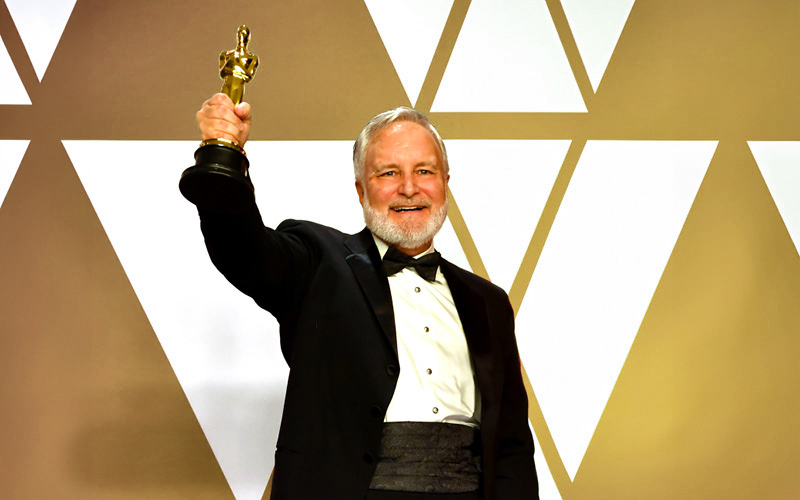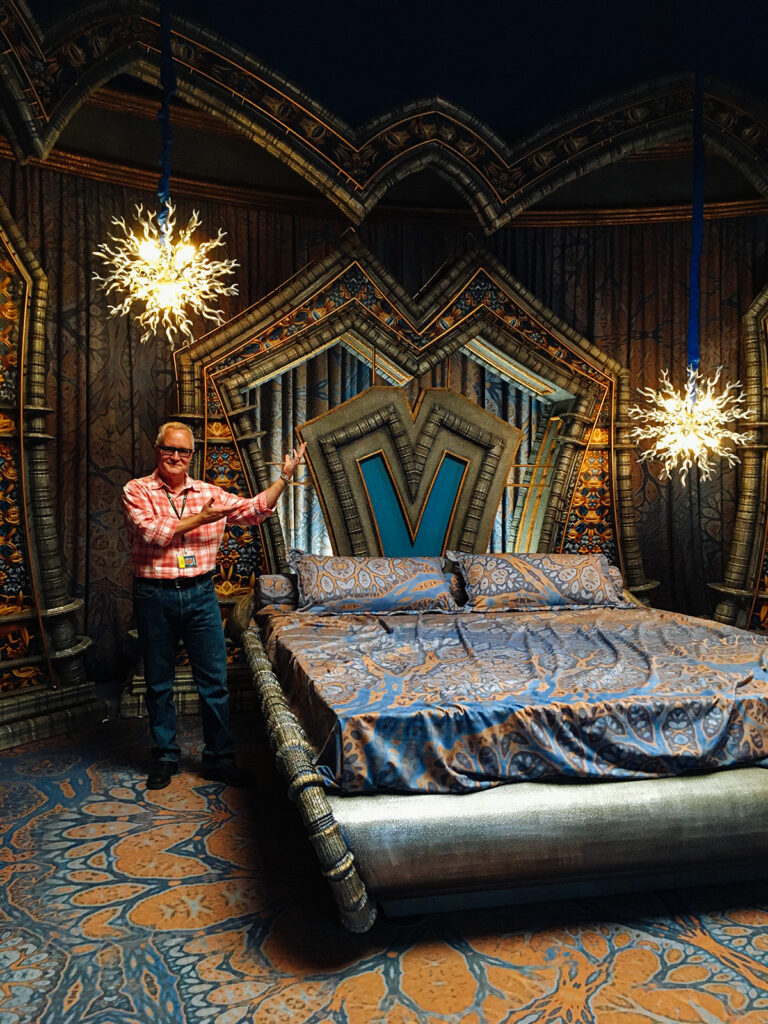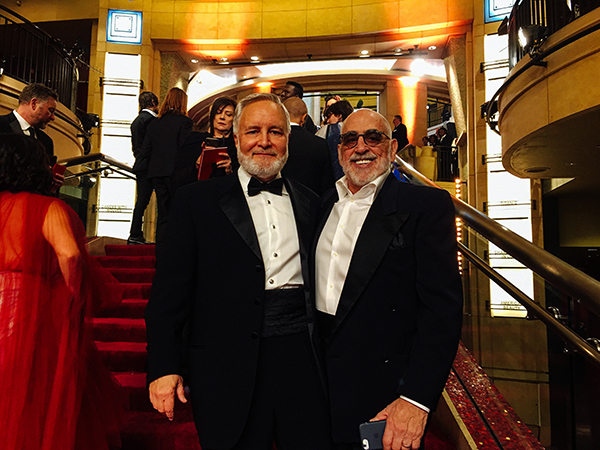Jay Hart (HHS’80) has reached the pinnacle of success in the film industry, but his is not a typical Hollywood story.
Hart is what screenwriters would call a reluctant hero.
Hesitant at first to even go into the movie business, Hart ultimately overcame his reservations to build a successful career as a Hollywood set decorator. His unique talents often go unnoticed by the general public—as many superpowers do—but they frequently save the day for directors who strive for greatness.
Hart’s own greatness was officially recognized in 2019, when he won the Academy Award for best production design for his work on Black Panther.
“Looking back, you could say my success is unlikely considering how much I didn’t want to follow this path at first—I really intended to be a traditional interior designer,” Hart says. “There are many people who always wanted to work in movies, but they struggle for years in obscurity for one reason or another. I really didn’t want to go into the business, but I kept getting opportunities, and it grew on me. I think I was just kind of lucky.”
Early on, Hart’s Hollywood career was defined less by giant leaps than by small steps—in several different directions.
Hart focused on environmental design at Purdue and was fully committed to a career in interior design after he graduated. Recruited out of college by a company in New York City, he worked for three years in the field before unforeseen life circumstances took him back to his hometown of Pittsburgh.
The change of scenery led to a change of focus for Hart, who veered into the restaurant business. He found success there, eventually helping operate four restaurants, but he wasn’t happy—so he changed paths again, staying in Pittsburgh but returning to interior design.
“I went hook, line, and sinker into the restaurant business, and it was the completely wrong decision for me because I really wasn’t cut out for it,” Hart says. “I realized that I hated it, so I sold my interest in the restaurants, reoriented my career, and took a job as an interior designer for like $15,000 a year.”
It was then—when Hart was 27 years old, living in his hometown, and languishing in an entry-level job—that Hollywood came calling.
“I think Purdue prepared me for success no matter what I was doing at any given time. The education I got at Purdue enabled me to speak the language of art and design across fields. Being Purdue, it also touched on engineering and building and architecture. It gave me a leg up.”
The year was 1985. The movie was Day of the Dead, a zombie movie filmed in Pittsburgh by famed cult director George Romero. The job was production assistant, though one of Hart’s main responsibilities was to “go to the grocery store and get the blood and guts for the zombies to eat on camera.”
“It was all happenstance, completely unintended—I just met some filmmakers, and that’s how I rerouted into the film industry,” Hart says. “My first experience with it, I thought, ‘This is a stupid way to make a living. I don’t really want to be in the movie business.’ So, I went back to interior design, but then another movie came along and I really enjoyed it. I thought, ‘Okay, I might be able to do this.’”
Hart moved to California soon after finishing Day of the Dead—even though he was still not sold on a career in entertainment. But he found consistent movie work almost immediately, helped in part by an industry strike that put nonunion members like him in high demand.
“The fact that there was a strike going on when I got to California is the only reason I got work,” Hart says. “I moved out with friends who were in the movies, but I didn’t come here to be in movies—I still wanted to be an interior designer. Then I got work the first week I was here. I looked around me and thought, ‘I’m as educated and experienced as the people doing these jobs, and I’m also making three times what I could make as an interior designer. So, why not?’ It all happened fast for me after that.”
Hart has now worked on nearly 50 movies and received official credits for 37. He was nominated for Academy Awards for L.A. Confidential and Pleasantville while also serving as set decorator for hits such as Wayne’s World, The Bridges of Madison County, Clear and Present Danger, Fight Club, Spider-Man 2, 3:10 to Yuma, Terminator Genisys, Independence Day: Resurgence, and Guardians of the Galaxy Vol. 2.
“Wayne’s World was my first California movie and it turned out to be a blockbuster hit, so I was on the radar—people knew who I was, and I started getting more calls,” he says. “Coming from the interior design world, which is very buttoned up, I initially thought the movie business was dumb and wasteful, with lots of people just standing around. But by the second movie, I realized they were buttoned up in a different way—everybody has a specific job, and they were waiting for their turn at bat. Understanding that, it started to be fun. It also helped that I worked on a lot of good movies.”
Together with production designers, set decorators are responsible for developing immersive sets, environments, and visuals that transport audiences and enhance storytelling. Hart has proven to be so good at this that he is often asked to work on some of the most challenging movies.
“Most of the movies I work on are bigger science fiction movies or historical dramas, where you’re creating a whole world that you have to conceive and then build,” he says. “It’s very challenging because cheesy scenery is going to take you out of the story. If you’re sitting in a theater and you’re noticing the scenery on any level—unless it’s intentional—that’s bad. I guess I’m good at that.”
Purdue may seem like an unlikely place for an Oscar-winning set decorator to have started out, but Hart believes the unique education he received served as the perfect foundation for Hollywood success.
“I think Purdue prepared me for success no matter what I was doing at any given time,” Hart says. “The education I got at Purdue enabled me to speak the language of art and design across fields. Being Purdue, it also touched on engineering and building and architecture. It gave me a leg up.”
—Aaron Martin




